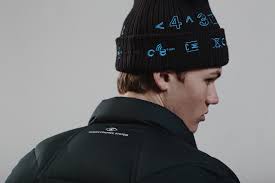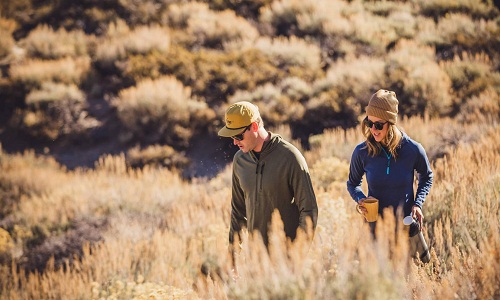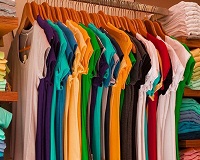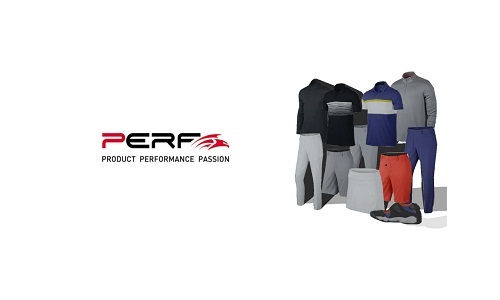FW
Croatian Trgovišće Textile Factory (TTT), whose tablecloths and napkins decorate the tables and can be found on the bedding of some of the most expensive hotels in Europe, has posted a revenue growth of 9 to 36 million kuna in the last five years. Around 70 percent of this revenue is generated by exports alone.
The company supplies one-third of its products to the largest domestic (Croatian) hotel names like Plava Laguna (Blue Lagoon), Maistre, Blue Sun, etc. The rest of the company's promising revenue is earned across the rest of the world, mostly in other European countries in addition to the United Kingdom, such as Switzerland, Germany, Sweden, and Iceland.
The company, which currently employs 85 workers and still supports 30 jobs at its suppliers, almost went bankrupt owing to the collapse of its biggest Italian customer. It the decided to look for other foreign buyers and rely on the help of the Croatian Bank for Reconstruction and Development (HBOR), whose export finance and payment instruments have been used regularly.
"Leading athleisure companies are experimenting with growing acceptance of wool activewear and the properties associated with it. Be it wool’s softness and odour-resisting properties, brands like Adidas and Lululemon are making sure the trend catches on. Added to this, wool’s inherent properties such as breathability and moisture-wicking capabilities are slated to drive the growth of the material. This trend was highlighted at the recent ISPO trade fair in Munich. Norwegian brand Devold won an ISPO Award 2018 for its Tuvegga Sport Air base layer. The reversible two-sided functional base layer is designed for high-performance activities and is made from 100 per cent Merino wool."
 Leading athleisure companies are experimenting with growing acceptance of wool activewear and the properties associated with it. Be it wool’s softness and odour-resisting properties, brands like Adidas and Lululemon are making sure the trend catches on. Added to this, wool’s inherent properties such as breathability and moisture-wicking capabilities are slated to drive the growth of the material. This trend was highlighted at the recent ISPO trade fair in Munich. Norwegian brand Devold won an ISPO Award 2018 for its Tuvegga Sport Air base layer. The reversible two-sided functional base layer is designed for high-performance activities and is made from 100 per cent Merino wool.
Leading athleisure companies are experimenting with growing acceptance of wool activewear and the properties associated with it. Be it wool’s softness and odour-resisting properties, brands like Adidas and Lululemon are making sure the trend catches on. Added to this, wool’s inherent properties such as breathability and moisture-wicking capabilities are slated to drive the growth of the material. This trend was highlighted at the recent ISPO trade fair in Munich. Norwegian brand Devold won an ISPO Award 2018 for its Tuvegga Sport Air base layer. The reversible two-sided functional base layer is designed for high-performance activities and is made from 100 per cent Merino wool.
The Woolmark Company displayed products like wool footwear, seamless apparel and wool filling. Lars Ulvesund, sports and outdoor advisor, The Woolmark Company, stated while many outdoor brands already have wool in their collections, increasing number of brands are introducing wool into their high-intensity categories. Most of the team’s recent meetings were about new developments and taking wool in sports to the next level. A lot of wool innovations are in the making right now, both in current product areas but also in new segments where there is none, or very little, wool today. This will give wool a much bigger platform for the future, he added.
Ulvesund, sports and outdoor advisor, The Woolmark Company, stated while many outdoor brands already have wool in their collections, increasing number of brands are introducing wool into their high-intensity categories. Most of the team’s recent meetings were about new developments and taking wool in sports to the next level. A lot of wool innovations are in the making right now, both in current product areas but also in new segments where there is none, or very little, wool today. This will give wool a much bigger platform for the future, he added.
Here comes another sportwear frontrunner, Adidas. Craig Vanderoef, Senior Director of global running apparel and customisation, Adidas, says in developing wool activewear, his team wants a garment that will keep the wearer warm when cold, cool when hot, dry when raining, and windproof – and look great. During a recent Australian Wool Innovation (AWI) podcast, he said the company needed one thing to bring all those together and that was Merino wool.
Wool’s Inherent properties
Wool’s natural properties make it ideal for next-to-skin items such as underwear, base layers, socks or T-shirts. One of the most important is breathability. Wool can absorb large quantities of water vapour – twice as much as cotton and 30 times as much as polyester – and allow it to evaporate. When worn next to the skin, wool works as a dynamic buffer for the microclimate between the fabric and the skin, smoothing out the humidity and temperature. This makes wool garments less clingy and more comfortable than garments made from other fibres. Add to this the traditional wisdom that wool keeps you warm even when wet. The inherent natural 3D crimp of the wool fibre traps pockets of still air, insulating you from a cold environment. In the outdoors, this can be the difference between life and death.
Less dramatic but equally important is wool’s natural resistance to odour. Athletes such as mountaineers and hikers, who may wear clothing for long periods without bathing or laundering, report less odour build up with wool apparel than with synthetics. Wool’s ability to absorb and release the water vapour that builds up during physical activity also prevents the accumulation of sweat and bacteria that lead to unpleasant smells. The unique chemical structure of wool enables it to absorb and lock away odours, which may develop, and only release them on washing.
Greater Than A, the sportswear brand of Norwegian alpine ski racer Aksel Lund Svindal, an Olympic gold medallist, uses wool in his sportswear brand. The brand aims to make functional clothing that looks and feels fantastic and at the same time causes no harm to the planet. Svindal likes wool for its technical features, such as how it handles changes in temperatures, and the transport of humidity away from the skin. Aksel uses wool for training and has a race suit designed for aerodynamics. The trick is to get changed as soon as you can in the finish area. Put on some dry and warm wool.
"The products offered by the brand are dedicated to all those heroes, who live with a "Never Give Up" attitude and extreme zeal. From runners who run for leisure, to fitness freaks who take their every single workout to a new level and to professional athletes who play the game at the highest level, Perf lets each of them find their true rhythm. Brand has the following product offerings both for Men & Women."
 Fashion in Italy, since its beginning, has been synonymous with masterful tailoring, rich history, impeccable style and grand tradition. Perf', the Italian Sportswear brand embodies this combination of Italian design and technology that denotes passion and performance.
Fashion in Italy, since its beginning, has been synonymous with masterful tailoring, rich history, impeccable style and grand tradition. Perf', the Italian Sportswear brand embodies this combination of Italian design and technology that denotes passion and performance.
The parent company of brand PERF Italia, Rahman Group is a world leader in the field of leather & footwear manufacturing. The group has a worldwide presence with manufacturing facilities in countries such as India, France, South Africa, UAE and Tunisia. Well equipped with the most modern machineries, the group also has a specialised workforce to produce all types of quality leather, footwear(especially in safety & army footwear) and leather goods.
Product basket
The products offered by the brand are dedicated to all those heroes, who live with a "Never Give Up" attitude and extreme zeal. From runners who run for leisure, to fitness freaks who take their every single workout to a new level and to professional athletes who play the game at the highest level, Perf lets each of them find their true rhythm. Brand has the following product offerings both for Men & Women:-
extreme zeal. From runners who run for leisure, to fitness freaks who take their every single workout to a new level and to professional athletes who play the game at the highest level, Perf lets each of them find their true rhythm. Brand has the following product offerings both for Men & Women:-
Dedicated to all sportslovers, the brand Perf offers products for everyone from runners running for leisure to fitness freaks to professional atheletes. These products are dedicated to all those heroes, who live with a "Never Give Up" attitude:
• Athleisure • Active wear • Performance garments viz.Yoga, Jogging, Sports Inspired • Winter Wear Adventure Jackets • Including sports bra etc for females
Quality driven
Deeply committed to quality, the Perf Italia is ISO 9001: 2008 certified and follows stringent EN ISO 20345 and DIN norms. The brand is equipped with requisite infrastructure with a perfect blend of highly technical, skilled and semi-skilled workforce and competent managers that have helped it to carve a niche for itself in theglobal market.
Rajiv Pande,President, Apparel Div believes that consumer insight drives its product development, functionalities, etc. as it is highly grounded effort to win the heart of the prospect because brand is not in a hurry to prove rather we want to win long term loyalties and this is the core DNA of our brand and the overall work ethos of this Indian translational group.
Hammad Rahman,CEO terms it as an aspirational product for the discernible millennials who have taste for quality and most contemporary product but may not have affordability to buy brands. Product has a differentiated approach with international connect but suited to taste and pockets of Indian customers.
In the first quarter of 2018, Hong Kong’s economy grew by 4.7 per cent year-on-year in real terms, up from 3.8 per cent growth in 2017.
The growth of private consumption expenditure quickened to 8.6 per cent in real terms in the first quarter over a year earlier, from 5.5 per cent in 2017.
Total exports of goods grew by 5.2 per cent year-on-year in real terms in the first quarter, after increasing by 5.9 per cent in 2017, while exports of services grew solidly by 7.5 per cent in real terms in the first quarter, up from 3.2 per cent growth for 2017.
The four pillar economic sectors of Hong Kong are trading and logistics, financial services, professional services and other producer services and tourism. The industries which Hong Kong has clear advantages in for further development are cultural and creative, medical services, education services, innovation and technology, testing and certification services and environmental industries, which together accounted for 8.9 per cent of GDP in terms of value-added in 2016.
Hong Kong is a highly attractive market for foreign direct investment. Global FDI inflows to Hong Kong in 2016 ranked fourth globally. In terms of outflows, Hong Kong ranked third, after the Chinese mainland and Japan.
Traditional trends, such as bold prints and metallic embellishments, jostled with high-tech textiles and augmented-reality apparel for the attention and spend of big buyers at the recent New York Tex World international sourcing expo.
Brr, an Atlanta-based start-up, was keen to showcase its innovative high-tech cooling fabric. At present, Brr's process has only been applied to synthetic fibers and cotton blends. Its success to date, however, has already been enough to secure orders from a number of leading US brands, including Gap and Joseph A Banks.
Customers wanted bling items – spangles and sequins—and metallic finishes. Bright prints, especially florals, were also showing well at the event. American customers seemed to prefer bright colors with splendid designs – big flowers. By contrast, Europeans prefer more solid colors.
While florals were still on trend, more and more ethnic designs were coming through.
Europe is far more of a fast-fashion market, while the US tends to be a little more stable and conservative, as well as being very price-oriented.
For Minerva, a South Korean fashion brand, foil is doing very well right now.
Brooklyn Fashion and Design Accelerator, a ethical style hub with a focus on high-tech textiles, introduced a jacket complete with traffic-signaling LED patches.
While wool – natural, renewable, and biodegradable – has a positive environmental story, rating tools score it poorly due to flaws in the way certain impacts are assessed, or in some cases, not assessed.
For example, important impacts such as microplastics pollution are not considered in ratings that rely solely on life cycle assessment (LCA).
Additionally, LCA footprinting should cover a product from cradle to grave. But because it is easier, some ratings use only cradle to gate. As a result, the downsides to other fibers are left out, while what’s negative for wool is left in.
The issue is that of communicating wool’s environmental credentials. Natural, sustainable, and biodegradable, wool is as good as it gets.
Demand for finer wool in active wear and next-to-skin continues to grow, while a low price for broader wools, relative to other fibers, should contribute to an improvement.
Past supercycles, when they have turned down, have always been due to events external to the industry.
As wool prices continue to supercycle, sustainability takes centre stage.
There has been yet another rise in prices for Merino and fine Crossbred wool, in what is described as a supercycle. The last supercycle occurred in the late 1980s. This one has now gone on for more than 112 weeks, taking the wool industry into new territory.
Seasonal conditions in Australia and South Africa may see supply remain at current levels in the short term.
High-Tex from Germany made a guest appearance at Techtextil North America.
A total of 66 companies presented technical textiles, nonwovens, textile-processing machines, smart textiles and textile-research projects to the trade visitors.
Besides gaining new customers, the focus of the companies taking part in High-Tex from Germany was on cultivating customer relations. The German pavilion gave them a good opportunity to get to know the US market better.
In addition to the appealing exhibition-stand concept and the excellent organisation, the companies taking part were particularly pleased with the high visitor standard.
The companies taking part in High-Tex from Germany made their presentations on around 1,300 sq mts of exhibition space with their own exhibition stands, with selected exhibits on a central Plaza.
Additionally, the German Institutes of Textile and Fiber Research, the Association of the Finishing, Yarns, Woven Fabrics and Technical Textiles Industry and the German American Chamber of Commerce provided insights into current research projects and offered information about the sector.
High-Tex from Germany was a good starting point for cultivating contacts with customers in the United States.
Visitors were very interested in exhibitors’ products. They gained potential customers and were able to make numerous high-grade contacts. The level of interest shown in German highly innovative e-textile solutions, which are completely new in the sector, was very high.
Abercrombie & Fitch has invested in loyalty programs and developed its direct-to-consumer and Omni channel capabilities.
All of these steps have contributed to an improved top and bottom-line.
Although earnings are still expected to be in the red, an improvement in the metric is expected, along with a five per cent rise in revenues.
The company undertook a massive rebranding initiative in 2014, moving away from the reputation it had built over the past decade. The company’s store count has been reduced, stores now have a smaller footprint with larger fitting rooms, and are integrated with technology. The overpowering perfume, which filled the stores earlier, has also been modified to a fresher, cleaner fragrance.
In order to better engage its customers, the company is also improving its social media presence.
While the company has been focusing on right-sizing its store footprint in North America, it is dependent on international markets for growth through expansion. In Europe, the company sees a billion dollar opportunity across all channels. At present, the company has a modest 117 stores in the region. Consequently, its focus in the region is on increased penetration, shifting to smaller, more productive stores, and building a more local customer base.
The European Union will slap 25 per cent tariffs on imports from the United States.
Those include men’s and women’s blue jeans, T-shirts, shorts, men’s synthetic woven industrial and occupational trousers, cotton woven bed linen that is not printed, and footwear with upper and outer soles of leather not covering the ankle.
This is in response to the US’ decision to place tariffs on aluminum and steel coming from some of the country’s closest trading partners: Europe, Canada and Mexico.
In many ways, the European Union’s imposition of tariffs on apparel is reminiscent of five years ago when the EU increased a tariff on women’s blue jeans made in the United States. That tariff rose from 12 per cent to 38 per cent due to another trade dispute, costing some Los Angeles denim makers as much as 2,50,000 dollars during a six-month period.
In 2017, the United States shipped 690 million dollars in apparel to the European Union’s 28 countries compared with 720 million dollars in 2014.
The other side of the issue is the cost of increased tariffs on aluminum and steel. Canada, Mexico and Europe account for more than half of the imports of those two metals coming into the United States. Anyone who uses aluminum or steel will see price increases.
Bangladesh’s readymade garment industry needs a comprehensive strategy to be sustainable.
Both industry owners and policy-makers need to understand the global impact of production and consumption patterns. Sustainability has to be evolved within the industry.
The garment industry needs to adopt cleaner and improved technology and management for better environment in order to achieve its goals.
Apparel buyers are focusing on eco-friendly ways of production.
Sustainability is an evolving issue for Bangladeshi entrepreneurs after the Tazreen and Rana Plaza incidents.
The goals of sustainable developments are cleaner water and sanitation, affordable and clean energy, industry innovation infrastructure, climate action and responsible consumption and production. Environmental sustainability consists of energy usage, water usage and chemical storage and handling.
The apparel industry has various impacts to the environment. It is polluting the environment in many ways. Environmental pollutions are wastewater discharge, solid and hazardous discharge, air emission and nuisances.
Energy efficiency relates to reducing energy use and maximising alternative energy resources. Water efficiency relates to reducing water use and maximising alternative water supply. Material efficiency relates to optimizing material flow and use and managing inventory and procurement.
Effective environmental management systems, monitoring auditing and environmental performance and complying with environmental systems are essential to improve management practices.











